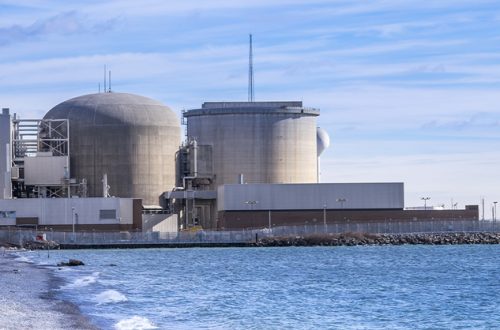Earth Day is a reminder that our planet is wondrous and delicate, and we only have one. Today, OSPE’s Equity, Diversity, Inclusion, and Accessibility Task Force urges you to think about how, in many cases, the challenges we face globally are often more critical and urgent in places with the fewest resources—just another aspect of the inequity equation.
Canada is trying to be more progressive when it comes to environmental justice. In fact, in June 2024, Bill C-226, An Act Respecting the Development of a National Strategy to Assess, Prevent and Address Environmental Racism and to Advance Environmental Justice, was passed into law in Canada. This legislation seeks to develop an environmental justice strategy and examine the link between race, socioeconomic status, and exposure to environmental risk.
Many engineers are aware of the environmental implications of their work and the importance of finding ways to innovate and develop without compromising the needs of future generations. OSPE’s Climate Crisis and Sustainable Cities Task Forces are great examples of engineers leading the way to a greener future. But how does environmental racism or environmental justice fit into these ideas? What should engineers know about environmental equity, and what implications does it have on our work?
Defining Key Terms
Canada’s Advancing Environmental Equityonline platform explains these key terms as follows:
Environmental equity is broadly understood to mean that no single group or community is at a disadvantage when dealing with hazardous environmental exposures or pollution, regardless of their diversity or social position. It requires the fair treatment and meaningful involvement of those who are or could be affected by environmental decision-making.
Environmental justice is a movement seeking to ensure fair and meaningful inclusion of affected peoples and equal sharing of benefits and costs when making decisions about the environment. When making these decisions, environmental justice aims to recognize and seek to address the existing inequalities faced by Indigenous, racialized, or otherwise marginalized communities.
Environmental racism is a form of systemic racism… when environmental decision-making, policies, and practices overly disadvantage some people due to their race. This outcome can be intentional or unintentional.
To better understand these terms, it can be helpful to consider historical and present examples of environmental injustice. As Rosenkrantz explores, there are ample examples of environmental inequities, whether harms that disproportionately affect low-income, Indigenous, racialized, and/or other marginalized communities, or reduced access to desirable environmental amenities.
Context & Root Causes
Why does environmental inequity occur? As outlined by the work of researchers such as Schlosberg, Cole and Foster, Fraser and Honneth, Taylor and Diaz, environmental injustice can be linked to many contributing factors, including:
- Distributional patterns of hazards: Environmental hazards created by industrialization disproportionately affect marginalized communities.
- Historical processes which determine hazard distributions: Social structures and institutional context affect how environmental decisions are made.
- Patterns of non-recognition: Environmental injustice often stems from patterns of non- or misrecognition of different cultures and worldviews.
- Unequal access to decision-making: Certain populations are more likely to be excluded from decision-making processes.
- Regulatory enforcement disparities: Communities may experience disproportionate environmental harm because of unequal enforcement of environmental protection laws and regulations.
- Limited mobility and segregation: Economic constraints and systemic barriers limit the ability of residents in affected communities to relocate, exacerbating their exposure to environmental risks.
Why this matters to engineers
Engineers recognize the threats of climate change and are helping to lead the way concerning both climate mitigation and climate adaptation. As they do so, it will remain imperative to keep equity considerations in mind. Canada’s National Adaptation Strategy, released in 2023, identifies advancing equity and climate and environmental justice as one of four guiding principles for designing and advancing climate adaptation actions. As decision makers, subject matter experts, and designers, engineers can play an important role in applying environmental justice principles to future development and redevelopment in our communities.
Watch for future installments in this Environmental Equity for Engineers article series. Future posts will explore a useful tool for environmental equity-informed decision making and discuss various environmental topics, such as flood susceptibility, air pollution, and extreme heat.
Naomi Williams, P.Eng., Member of OSPE’s Equity, Diversity, Inclusion, and Accessibility Task Force





Leave a Comment